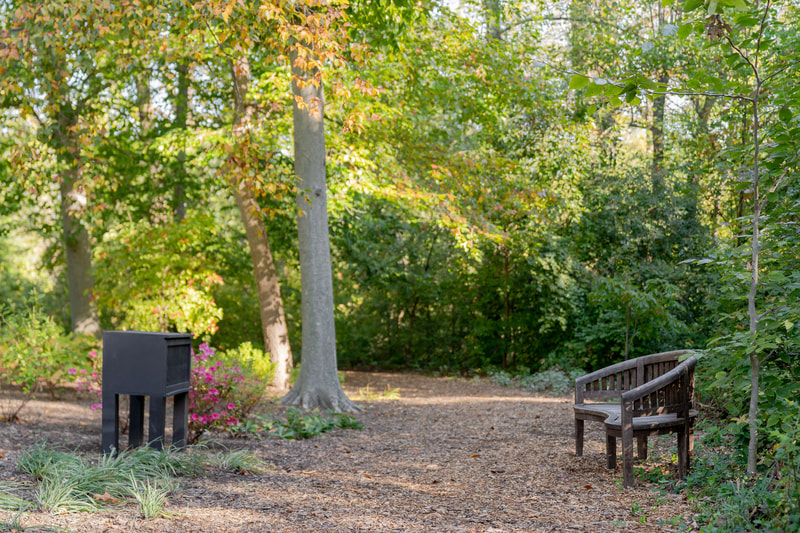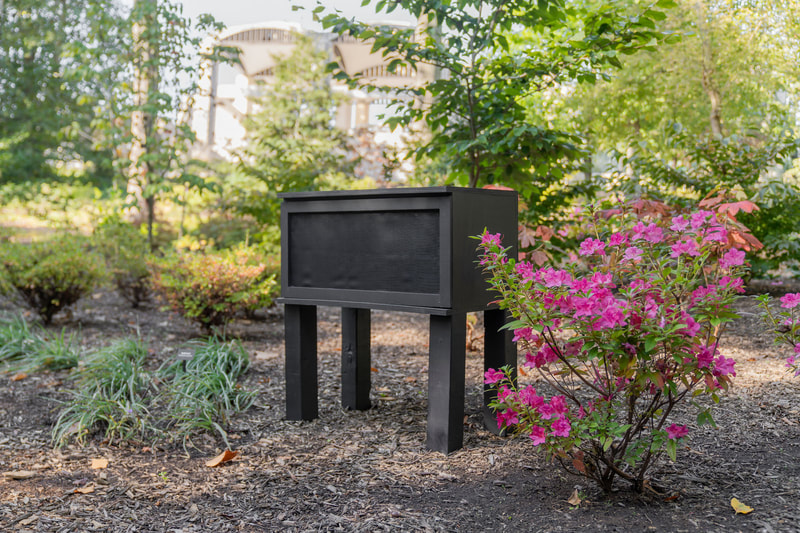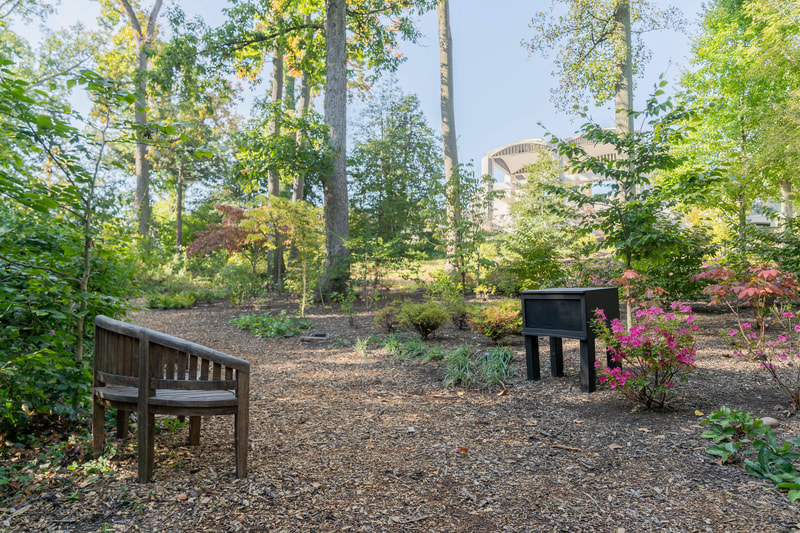Ferns, scrawned black (2023)
Site-specific sound installation at The Kreeger Museum
|
Ferns, scrawned black (installation view at the Kreeger Museum)
|
Ferns, scrawned black (complete audio)
|
Images by Anne Kim Photography
Ferns, scrawned black is a site-specific sound installation based on a poem by Mary Oliver. Like many of her poems, this one speaks to the importance of paying attention to the profound beauty in the many ordinary things all around us and how that can inspire compassion. I also read her poems as important prompts for environmental activism—if we are to fight for this planet’s survival, it’s critical that we do so not out of fear of the consequences but out of a deep compassion for our environment and ourselves as part of it. And that desire to protect all that is precious in nature must begin with a heightening of our awareness.
In my treatment of the poem I chose to create tension between the music and the reading:the sonic material surrounding the voice –samples derived from a Tibetan prayer bell and synthesized sounds inspired by the Japanese shō – hints at uneasiness and potential danger. This potential danger is represented by a gradual shift towards more dissonant, harsh and electronic timbres as the poem goes on. However, such dissonance only reinforces the poem’s final aspiration for us to be shaken from our sleep. The installation, therefore, serves on the one hand as an invitation to contemplate nature, and on the other as a call for action.
In keeping with the intention of heightening awareness and minimizing distractions, the visual element of the installation is minimal, restricted to a speaker inside a simple enclosure. This is intended to center the sonic material, allowing visitors to become acutely aware of their natural surroundings. In this way, the garden, and ultimately the visitors themselves, become part of the work.
The Kreeger Museum produced a digital catalogue for the exhibition.
In my treatment of the poem I chose to create tension between the music and the reading:the sonic material surrounding the voice –samples derived from a Tibetan prayer bell and synthesized sounds inspired by the Japanese shō – hints at uneasiness and potential danger. This potential danger is represented by a gradual shift towards more dissonant, harsh and electronic timbres as the poem goes on. However, such dissonance only reinforces the poem’s final aspiration for us to be shaken from our sleep. The installation, therefore, serves on the one hand as an invitation to contemplate nature, and on the other as a call for action.
In keeping with the intention of heightening awareness and minimizing distractions, the visual element of the installation is minimal, restricted to a speaker inside a simple enclosure. This is intended to center the sonic material, allowing visitors to become acutely aware of their natural surroundings. In this way, the garden, and ultimately the visitors themselves, become part of the work.
The Kreeger Museum produced a digital catalogue for the exhibition.


